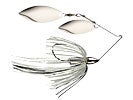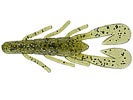It’s our family obsession. Every fall my wife Marilyn and I spend a good share of our available fall fishing days hunting trophy-size smallmouth bass on natural lakes near our home.
Of course I am always interested in catching big bronzebacks, but for about six weeks starting in early October we dedicate ourselves to searching out larger than average smallmouths as water temperatures tumble towards the upper 40s. Our focus will be on two glacially formed natural lakes not far inland from Lake Erie – 925-acre Conneaut Lake in northwest Pennsylvania and 13,000-acre Chautauqua Lake in the western panhandle of New York. Both of these lakes have a history of producing quality-size smallmouths ranging from 4 pounds to unofficial lake records of 8 pounds.
Location:
Smallmouths in northern natural lakes tend to spend summers suspended off points and humps with occasional short forays into shallower water. But as water temperature cools in the fall, the big boys move shallow for extended times to forage heavily on baitfish and small panfish. That’s when we hit the water to intercept them.
The key to finding big smallmouths in shallow water is identifying routes used by bronzeback wolf packs or individual bass to penetrate the shallows from deep water haunts. Every angler can spot clean rocky points where smallies frequently move up to feed. The same can be said for the deep outside weedline along a flat. Lure presentations are relatively easy in both of these situations.
However, often overlooked are inside turns of a point or an inward divot along a flat which provides extremely quick access from deeper water to shallower water. Rather than the point itself, these steep cuts are the preferred route of bigger smallmouths.
But the real challenge becomes identifying the hidden “avenues” obscured by weed growth on the points and flats which are also used by bigger brown bass. These avenues are compacted sand or cobble rock pathways surrounded by vegetation. Bronzebacks may use these hard bottom alleys to reach the inside weedline and attractive overhead dock cover, or simply wait in ambush within the weedbed for baitfish also utilizing the pathway to shallower water.
Lure Selection:
From my viewpoint, the walking surface bait is the best topwater for big smallmouth. That back-and-forth splashing injured baitfish action still drives bronzebacks crazy after all these years. The Heddon Spook, Jr. is my favorite. We start the fall season with the spook and fish it until water temperature drops into the high 40s on any day winds are light or calm.
I usually employ a three to five inch slender soft swimbait on a fish-head spinner in place of a spinnerbait. I feel the realistic profile and subtle flash of the swimbait/jig spinner draws more strikes in clear calm water conditions. Currently, Road Runner’s Swim’n Runner is my pick. However, if waves are rocking and rolling on the lake creating somewhat dirty water, I do not hesitate to tie on a 1/2oz double willow spinnerbait…and hope the pike leave it alone!
On some days in the fall, certain rattle baits apparently hit the right frequency thereby driving big smallmouth into attack mode. Using lipless rattlers in hot colors like red, orange, chartreuse and lime definitely contribute to increased strikes. Rapala Rippin Rap, Sebile Flat Shad and the Original Rattle Trap are favorites. For fishing over the tops of submersed weeds, I prefer a Floating Trap or the very slow sinking Flat Shad model. But for deep weed edges and clean points, the Rippin Rap gets the nod.
When I need to get the bottom of things – punching through weeds to a hard bottom alley, bouncing down a rock pile or dragging the deep edge of the weedbed – I have a skirted jig with craw-type trailer rigged and ready. It’s going to be a compromise head design because it must accomplish multiple tasks on a single cast – pitching, swimming and bottom dragging. The Baby Boo Jig from Booyah does a good job.
Potentially the best late fall and winter bait for smallmouth bass, blade baits also have a role in the early to mid-fall bite. Blades can be accurately pitched to open areas with a weedbed and worked with short hops. But they really excel for working the hard bottom points coming off the deep weed edge. If you have not done so, try the Binksy Blade from Fish Sense.
Click Link To Shop: Bass Angler Magazine
Hunting Big Bronzebacks Fall 2015 Bass Angler Magazine (Darl Black pg. 66 – 67)
- 2 colors available
- 14 colors available
- 7 colors available
- 13 colors available
- 22 colors available
- 28 colors available
- 9 colors available
- 10 colors available
- 6 colors available
- 44 colors available
- 2 colors available
- 1 colors available













